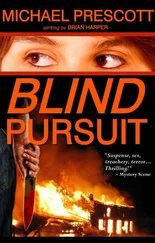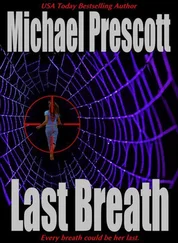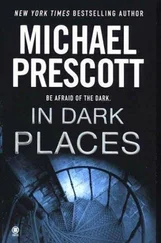Michael Prescott - Stealing Faces
Здесь есть возможность читать онлайн «Michael Prescott - Stealing Faces» весь текст электронной книги совершенно бесплатно (целиком полную версию без сокращений). В некоторых случаях можно слушать аудио, скачать через торрент в формате fb2 и присутствует краткое содержание. Жанр: Триллер, на английском языке. Описание произведения, (предисловие) а так же отзывы посетителей доступны на портале библиотеки ЛибКат.
- Название:Stealing Faces
- Автор:
- Жанр:
- Год:неизвестен
- ISBN:нет данных
- Рейтинг книги:4 / 5. Голосов: 1
-
Избранное:Добавить в избранное
- Отзывы:
-
Ваша оценка:
- 80
- 1
- 2
- 3
- 4
- 5
Stealing Faces: краткое содержание, описание и аннотация
Предлагаем к чтению аннотацию, описание, краткое содержание или предисловие (зависит от того, что написал сам автор книги «Stealing Faces»). Если вы не нашли необходимую информацию о книге — напишите в комментариях, мы постараемся отыскать её.
Stealing Faces — читать онлайн бесплатно полную книгу (весь текст) целиком
Ниже представлен текст книги, разбитый по страницам. Система сохранения места последней прочитанной страницы, позволяет с удобством читать онлайн бесплатно книгу «Stealing Faces», без необходимости каждый раз заново искать на чём Вы остановились. Поставьте закладку, и сможете в любой момент перейти на страницу, на которой закончили чтение.
Интервал:
Закладка:
Why had the pharmaceuticals worked here and now, but not before? There was no reason. More precisely, the reason was unknown, owing to the mysterious complexity of the human organism. A certain chemical would work in one instance, have no results in another, produce crippling side effects in the third, and there was no logic to it, no pattern, only the randomness of accident.
Dennis Callaghan had been cured — at least for the moment. This was enough for his parents and for Dennis himself, and it was enough for Cray. He had learned humility in this field. He had learned not to expect to understand too much.
Once the Callaghans were gone, Cray asked Margaret to send for Walter Luntz. “There’s an errand I need him to run,” he added quite unnecessarily
Walter Luntz resided in a guest room adjacent to the kitchen area, quarters intended originally for a live-in cook. But Walter was not a cook. He was a permanent resident of the Hawk Ridge Institute, a man of forty-nine who had spent the last twenty-five years of his life under psychiatric care.
His was an unusual case. He had responded quite well to pharmacological treatment in certain respects. His thought processes were fairly lucid, and he suffered from no evident delusions. Within the structured environment of the hospital, or outside it for brief forays into the larger world, he was fine.
But send him to a halfway house or ask him to fend for himself in a rented apartment — two strategies that had been tried in the early years — and he quickly decompensated, reverting to an acute psychotic state.
Cray was just as glad that Walter could not leave the institute. The man was useful here. He did clerical chores, even ran errands, driving a used Toyota Tercel that Cray had paid for out of hospital funds. His driving was quite good, and his license had never been revoked throughout all his years of hospitalization.
The institute was understaffed, and Cray could use all the help possible.
Today Walter would perform his greatest service.
Cray heard him coming — fast, clumsy steps — and then Walter Luntz appeared in the office doorway, a tall, stoop-shouldered wreck of a man, with long, ropy, simian arms and a potbelly and a conical, hairless head.
Unlike the other patients, Walter was permitted to wear street clothes. His taste in fashion was idiosyncratic at best. Today he wore khaki trousers, a turquoise-encrusted belt, and a lime-green open-collar shirt.
“Dr. Cray?” he asked hesitantly, afraid to cross the threshold without permission.
His voice was reedy and weak, a wind instrument breathlessly played.
“Yes, Walter. Come in.”
Cray shut the door after him, then ushered Walter to the couch. The door was oak, solid-core, and it ensured privacy.
Then he explained to Walter what he wanted. He explained more than once, keeping his words simple. Walter was not unintelligent, but he was naive and prone to childish misunderstandings.
The assignment Cray offered was a challenge, perhaps too great a challenge for a man whose tasks rarely required driving more than a few miles into nearby Safford for some office supplies. But curiously Cray felt sure Walter was up to it, so long as he had clear instructions and a couple of visual aids.
One of these was a photo Cray had downloaded from the Internet during a brief on-line session this morning, and the other was a slip of paper filled out with a few letters and numbers in a large, careful hand.
“Do you understand?” he asked the man who sat with him on the sofa.
Walter nodded. His head gleamed in the sun. “I can do it, Dr. Cray”
Even so, Cray reviewed the matter one last time before sending Walter Luntz on his way.
At 10:30 he toured the facility, opening a succession of locked doors with his passkey, checking in with the psychiatrists and supervising nurses on duty in the two active wards. He had heard of hospital directors who stayed in their offices all day, inaccessible and aloof. This was not Cray’s approach.
Anyway, he needed to keep moving. There was a restlessness in him today, a droning background hum of frustration, of fury.
He had come so close with Kaylie. Had his reflexes been a few degrees sharper, or had he simply put the canister of liquid nitrogen in the backseat, safely out of her reach…
A hundred times he had replayed the scenario in the desert, always with himself as the victor.
God damn that woman. Still alive.
But perhaps not for long.
In Ward A, Nurse Killian reported a problem with a recently admitted patient who was not responding to a rather high dosage of Haldol.
“Let me talk to him,” Cray said. “What’s his name?”
“Roger.”
“Bring him out.”
Cray met Roger at the nurses’ station. The man was young and tall, and he had the moist, limpid eyes of a suffering artist.
“Have you been hospitalized before, Roger?” Cray asked kindly.
“Yes, sir.”
“And they gave you pills?”
“Yes.”
“Which ones?” Cray swept his hand over the metal tabletop, where he had laid out a variety of standard neuroleptics. “The red? The yellow? The green?”
“All of them.”
“Which ones worked?”
A ghostly smile lit up Roger’s pale face. “The red ones were pretty good. I got better on the red.”
“Then that’s what you need. Thank you, Roger.”
When the man was gone. Nurse Killian objected to the procedure. A patient could not be allowed to prescribe his own medication.
Dorothy Killian was a good RN, and Cray was lucky to have her, but she was new at Hawk Ridge, and she didn’t know how he did things.
“It’s been my observation,” Cray said, “that the patient, especially an experienced patient like Roger, often knows which pharmaceuticals have been most beneficial to him. Let’s take him at his word.”
He prescribed a loading dose of risperidone — the red pills — and left Nurse Killian shaking her head.
Next he visited the day hall, where those patients who were not confined to their rooms congregated throughout the morning and afternoon. The room was large and airy, although the high, arched windows were unfortunately crosshatched with iron bars. Open doors led to a veranda, which had been screened in for security reasons.
Cray was quite serious about security. In the fourteen years of his directorship, there had been just three significant escape attempts, only one of which had been successful.
Cray pursed his lips. Yes, only one.
He surveyed the day hall. Ceiling fans turned languidly overhead, and sunlight gleamed on the tile floor. The room would have been exotic and beautiful, if not for the TV set babbling behind a clear plastic shield, and the patients lolling on cheap lounge chairs and badly worn couches, and the ubiquitous smell of Lysol.
A therapy aide informed Cray that a patient named Lawton, known for disruptive behavior, was demanding a Bible. This was a common request at Hawk Ridge. An obsession with religion characterized more than half the patients at any given time.
It was Cray’s hypothesis that religious impulses originated not in the cerebral cortex, the seat of thought, but rather in the more primitive limbic system, where primal emotion held sway. The limbic brain — specifically the septal region — was known to be dysfunctional in most schizophrenics.
He had expounded on this idea in The Mask of Self. If humanity’s deepest and most reverent feelings were the product of a chemical imbalance or a neurological malfunction, then was any aspect of human life truly sacred? How about life itself? And if not, then was there any reason — any logical reason — not to kill one’s fellow human beings, if one could get away with it?
Of course he had not made these last points in his book. Tactfully he had left his readers to draw their own conclusions.
Читать дальшеИнтервал:
Закладка:
Похожие книги на «Stealing Faces»
Представляем Вашему вниманию похожие книги на «Stealing Faces» списком для выбора. Мы отобрали схожую по названию и смыслу литературу в надежде предоставить читателям больше вариантов отыскать новые, интересные, ещё непрочитанные произведения.
Обсуждение, отзывы о книге «Stealing Faces» и просто собственные мнения читателей. Оставьте ваши комментарии, напишите, что Вы думаете о произведении, его смысле или главных героях. Укажите что конкретно понравилось, а что нет, и почему Вы так считаете.












